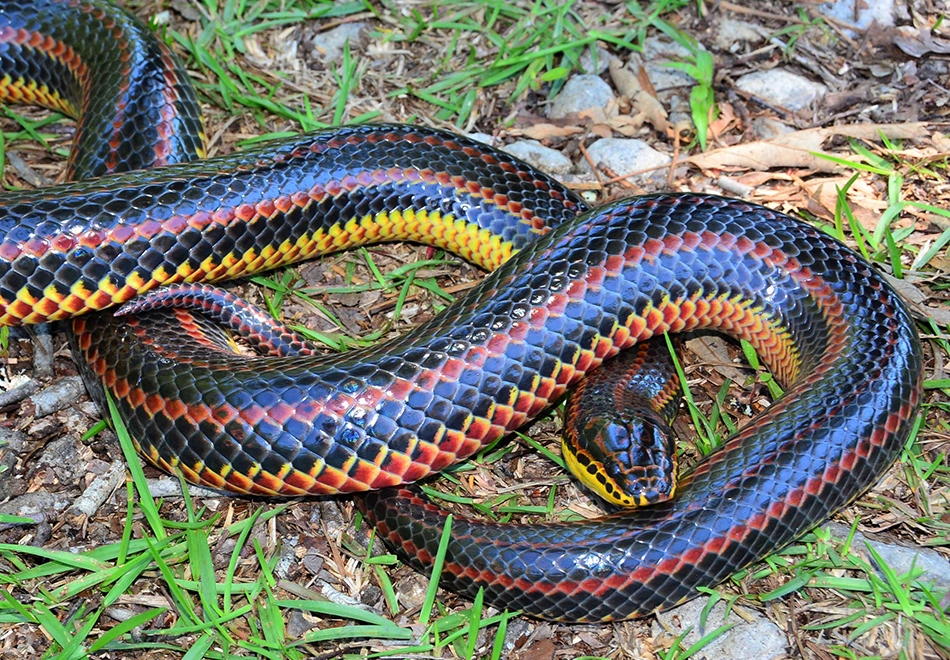Good to see positive research on this subject, was soil health included in the research? I’d hope farming industry for vegan industry isn’t doing the same it’s doing for meat industry; which is to run the same crop year after year, ruining whatever growth potential that plot of soil had longterm.
I’m not saying that soil health isn’t a problem for making vegan food. Since their is a significant less amount of crop farming needed to feed a vegan population we would significantly cut the amount of farmland needed and free up a significant amount of soil.
Being vegan as well as fighting for animal rights we of course demand a more sustainable food system and everyone in it getting paid fairly.
Biggest step up would probably be for vertical farming to go mainstream. It’s not too great for meat industry, but for vegan industry it works more than well.
Another step up will be mass produced lab grown animal proteins/oils/fats (meats) which a healthy human diet requires. On other hand we can still also have a remnant of meat industry be left alive, which is to repurpose animals that have died of natural causes, rather than inhumanely farming animals enmasse.
I mean we don’t need animal proteins for a healthy human diet…
B12s and similar are a bigger issue IIRC. Plants have the exact same proteins all life does, just not necessarily in the right amino acid proportions for humans. If you’re not eating all one staple like a peasant you’re probably not going to get seriously protein deficient, although it’s harder to get enough to build muscle.
I’ve been vegan for years and will tell you it’s incredibly easy to get the amount of protein in. Plus like with an omni diet most packaged foods are fortified for vitamins.
Good to know. I’ve been ovo-lacto so I’ve never worried about it.
From what I’ve seen veganism isn’t so good for actually bodybuilding, but let’s be honest, the exercise is the bigger barrier for 99% of people. Maintaining a flabby Westerner body isn’t biologically hard.
100g of wheat gluten is almost 80g of protein. Which easily provides the amino-acids most legumes have in lower concentrations. Besides seitan which is very easy to make from wheat gluten, tofu, tempeh and many other plant based (and really easy and cheap to prepare on your own, in large quantities and store in the freezer, I have a drawer in mine full of them) foods in some traditions that are even low in carb content for people with insulin resistance. Or just low in calories so you can cook them whichever way you want with whatever else you want to add to your food. It’s not really hard to actually do it.
Being “not flabby” has more to do with your understanding of how insulin works on the body than it has with anything else, even activity levels. Especially in western societies. And its pretty damn hard to think properly about your food, even though its scientifically clear those in charge are pushing shitty guidelines to the people. For example, as you can see here :
Conflicts of Interest: First-ever systematic review of the extensive financial conflicts of interest on the Dietary Guidelines Advisory Committee. Findings: 95% of the 2020 committee had at least one tie to a food or pharmaceutical company; Over half had 30 such ties or more; USDA does not disclose conflicts of interest, despite a National Academies recommendation to do so.
Some don’t need the carbs though and that’s not as easy as getting the proper amount and kind of aminoacids when going completely plant based. If you have the time you might find this interesting.. The number of people that have a messed up body when it comes to carbs, is beyond impressive.
I am commenting on the “healthy” aspect. Healthy, sometimes is not just about adequate.
Ultimately, these findings point to new avenues of research that could increase microbiome-informed understanding of human health and hint at potential biomedical applications in which specialized bacteria are used to curtail CVD development.
And what does this have to do with my previous point?
Basically the study found that previous research on TMA’s (which are abundous in animal protein) saying they’re harmful to humans, may actually be wrong, and that they’re in fact beneficial to our health. (edit 2: due to rapid bilophia production in the microbiome, which converts it to DMA?)
I’m not a microbiologist though, and I hope someone with background could expand this into an ELI5.
Edit: If you scroll down on the page, you can find a figure (FIG 1) which gives a more easy to understand view on the study and the impacts animal proteins were found to have.
I still don’t understand the economics of vertical farming. Isn’t that a lot of extra infrastructure to produce the same plants? What area of solar panels do you need to power an acre-equivalent production of vertical crops?
The biggest step up would be changing consumer preferences and maybe different regulation (tighter animal welfare laws, emissions standards and/or removing any subsidies for animal agriculture).
Consider this: You can install a massive local vertical farm directly inside a large city, but you can’t do the same for normal farming. Thus severely reducing the economic/ecological costs of farming, because you can supply locally produced veggies directly into stores, rather than needing to haul them for 50-1000km away.
And stuff like: You can grow plants 24/7 with no breaks as it’s all automated. You can adjust the “climate” just right for whatever plant you’re growing. You’re not using massive plots of land that could for example be used for housing, and leaking fertilizer/pesticides to the soil/rivers/lakes/sea. You’re not wasting a ton of energy by using combustion based machinery, and also not causing more pollution. In general the energy required for vertical farming can be done entirely by solar.
That makes sense. I guess what I’m hoping for is a breakdown of the exact costs and footprints involves, at least in estimation. Like, less shipping is great, but a solar farm plus a factory-greenhouse is not a small investment, and the solar farm can’t be made vertical, which will cut down on the area savings at least somewhat.
I get why everyone goes for leafy greens, since I’ve experienced sad Canadian winter lettuce. I’ve also heard it’s a bad choice, somehow, and a lot of startups have failed as a result.
Well you can repurpose a lot of what used to be large farmlands and install large solar farms there, potentially grow some plants in the solar panels shadows as well. Win-win situation.
Consider this: the sun already provides all the energy required to grow plants, and healthy soils provide the required nutrients. Plants can already harvest solar energy, that’s kinda their whole thing.
Your model requires synthetic nutrients and synthetic sunlight. Producing and maintaining solar panels and the associated infrastructure is not environmentally benign, particularly if as you suggest in your other comment you would want to install solar arrays on former farmland.
How about instead we grow plants properly, in ecosystemically responsible ways that promote soil health, which is directly connected to our health via our gut microbiome. Growing sterile plants in a controlled environment is not an ecological solution at all, it’s a sterile solution.
Our agricultural system isn’t in need of high-tech solutions. High-tech solutions is exactly what has been fucking agriculture up for the past seventy years.
It doesn’t require synthetic nutrients actually, but it does require synthetic sunlight: which is fine, actually.
The solar panels needed are beneficial to everyone involved. They provide electricity to locals, they help plants combat climate change by providing much needed cover from direct sunlight which these days can completely ruin your crops.
The point isn’t to make all former farmland SOLELY solar panels. It’s to help the crops/plants themselves grow better under the shade of the panels.
Sustainable farming is absolutely still a requirement in the future.
Vertical farming is to supplement the needed gaps in farming, like installing them inside cities so certain plants/crops can be served 1. Much faster, 2. In a much greener state, and 3. Direct-to-store which heavily reduces pollution potential from having to haul it from really long distances away, and in many cases, requiring refrigeration to keep the shipments cool, further polluting the planet.
There isn’t “meat industry” farming or “vegan industry” farming. The primary dichotomies in farming are industrial vs small scale, organic vs conventional, and local vs global. If you don’t like monocultural industrial farming, then support the other types of farmers.
I do support non-monoculture farming. Problem is as a consumer there isn’t an easy way to know how it was farmed. Imo sustainable farming should be legislated by government.
It is by way of nationally recognized organic standards. Otherwise governments tend to be in bed with agrochemical and agribusiness companies.
Relevant section of Canadian organic standards:
5.4.2 Where appropriate, the soil fertility and biological activity shall be maintained or increased, through: a) crop rotations that are as varied as possible and include plough-down crops, legumes, catch crops and deep-rooting plants; b) incorporation of plant and animal matter in compliance with this standard and with Table 4.2 (Column 1) of CAN/CGSB-32.311, including the following:
- composted animal and plant matter;
- non-composted plant matter, specifically legumes, plough-down crops or deep-rooting plants within the framework of an appropriate multiyear rotation plan; and
- unprocessed animal manure, including liquid manure and slurry, subject to the requirements of 5.5.1
It’s good countries are moving towards this, because goddamn the worst actors do not change unless forced to.
Lately animal manure has been started being used more compared to synthetics, mostly because the materials needed for synthetics were running out, and it was yet again found animal manure actually has all the needed materials healthy soil needs and more.
I’ve always heard that “organic” farming is really not especially different from conventional farming, including from some folks in agriculture. Like, they still use chemical pesticides and stuff, just different ones that are less effective and so sprayed more heavily.
I don’t have anything to back that up with though, so there’s a reasonable chance you have better info here. I’d be interested to know more if you’ve got standards and such you can share?
Lived at a farm that got some organic farming approvals; it depends on the country. And perhaps even your region. In my country, you can get certain approvals/certifications for organic farming, and the regulations for that is very strict. Things like “chemical” (synthetic) pesticides are forbidden outright, so are strong fertilizers etc. This has government oversight, so, there are randomized sampling and testing done on approved entities (farms, companies).
Sadly this often leads to higher costs and more land use. Like it or not, a lot of the things forbidden do lead to much higher yields etc. The end result is higher prices; organic (certified) products are quite expensive here.
Totally, organic is not the same as sustainable.
Organic is very much
the same asabout sustainability. The degree to which a particular enterprise succeeds in living up to organic principles and to internationally recognized organic standards is a different question.Organic standards are available to be read. Here is the Canadian standards. You’ll notice that sustainability is very much the organizing principle.
Organic standards are not the be-all and end-all of sustainability, that is true.
Plus, natural pesticides aren’t necessarily better for things.
Were those folks in agriculture organic farmers?
Do we use chemical pesticides and stuff. We can, yes. But what do you mean by chemical? Everything is a chemical. Water is a chemical. What we don’t use is synthetic pesticides or fertilizers. Which is actually a big difference from “conventional” agriculture for a variety of reasons.
Firstly, synthetic nitrogen is a major source of CO2 emissions. . Runoff from the over-application of fertilizers is also causing tremendous damage to aquatic environments. . Instead of relying on continuous application of synthetic nutrients, the organic practice is to build organic matter in soil (hence the term “organic”), which improves water holding capacity, reduces leaching, and reduces compaction. Instead we use compost and minerals like rock phosphate. When a more significant dose of nitrogen is needed we use stuff like feather meal or bone meal. These materials have a much reduced risk of leaching because the nutrients only become available in the soil as they are processed by the soil microbiome and are therefore released more slowly over a prolonged period of time.
Next, we don’t use herbicides. That means we don’t have bare exposed soil, which causes erosion, compaction, and top-soil loss (ie those things what caused the dust bowl). Instead we use cover crops, mulching, and mowing. Which builds up the organic matter in soil, promotes biodiversity, prevents erosion and compaction, and builds top-soil. Conversely, take a look at the rates of glyphosate application in contemporary “conventional” production and look at the articles that come up when you search for glyphosate.
Pesticides. Yes, we use pesticides. A pesticide is anything that is applied to remove pests. The difference is in the type and the effect. We do not use systemic pesticides (pesticides which are absorbed by a plant and render it toxic to pests over a prolonged period). We do not use pesticides that persist in the environment. We use things like sulfur and copper. We use things like bacteria and viruses. We use things like oils. We use things that target specific problem species at specific periods in their lifecycle. For instance, in my industry, we need to control for a creature called a coddling moth. When coddling moth levels get out of control, we spray a coddling moth virus. This virus kills coddling moth when applied at the proper time in their life cycle. It does not affect other species, and it does not persist in the environment. The conventional approach would be to spray a broad-spectrum insecticide that kills everything in the orchard. It’s very easy to see the difference for yourself. Simply visit a conventional farm in the summer, then go visit an organic farm. You’ll see the difference.
Finally, at least in my country, organic standards are the only legitimate regulated standards that protect animal welfare. Free range, cage free, whatever, that stuff doesn’t mean anything if there aren’t national or internationally recognized certifiable standards. We have that in organic. Organic livestock are not fed antibiotics and growth hormones, and there is enforcement of humane standards of care. For example, from the Canadian Organic standards:
6.1.3 Livestock production is a land-related activity. a) Herbivores shall have access to pasture during the grazing season and access to the open air at other times whenever weather conditions permit:
- calculated on the basis of dry matter intake, the consumption of grazed forage by ruminants that have reached sexual maturity shall represent a minimum of 30% of the total forage intake;
- consumption of grazed forage shall rise above 30% during high forage growth periods;
- a minimum of 0.13 ha (0.33 ac.) per animal unit shall be devoted to grazing. [One animal unit = one cow or one bull, or two calves each 102 to 227 kg (225 to 500 lb), or five calves, each less than 102 kg (225 lb), or four ewes and their lambs, or six does and their kids];
But we live in a capitalist, industrial society. So yes, not all organic farms are equal. Not everyone is actually committed to the principles of the organic movement. Corporate agribusiness obviously is interested in exploiting the organic sector. That doesn’t mean that “organic” is meaningless or that it’s all a scam. Just like Fair Trade, it’s an important signifier but that doesn’t mean it’s immune from abuse or exploitation.
It’s very important that the national standards oversight bodies are protected from interference from agrochemical companies and industrial farming interests who want to see standards relaxed so they can exploit the organic label for commercial gain. You can look at the beginning of this document to see who sits on the organic standards committee in Canada.
And it’s important that as consumers you consider the type of farms you are supporting when buying food. Support local, small scale, organic producers as much as you can. If you can’t get organic, then at least try to get local, small-scale producers. If you can’t do that, then get local organic. If you can’t do that, get supermarket organic. The most important thing is to have, as much as you can, an understanding of where your food is coming from and the methods by which it is being produced.
Knowing the farming industry, it’ll still be the exact same corn and soy monocultures, just edible breeds





